Art World
Without State Funding, Ghana’s Rising Stars Are Building an Art Infrastructure of Their Own to Cultivate the Next Generation of Creatives
Artists are plowing proceeds into supporting their peers at home.
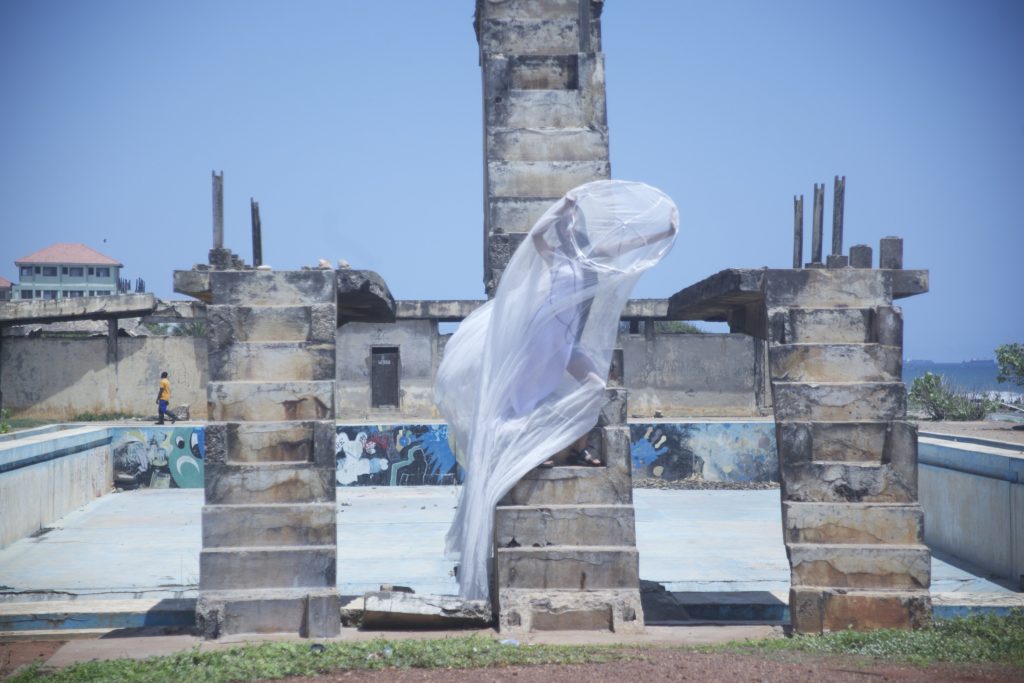
Artists are plowing proceeds into supporting their peers at home.

Rebecca Anne Proctor

On a newly tiled outdoor stage in a grassy plot of land just off Achimota Road in Dzorwulu, just outside of Accra, Ghana, a few dancers, and musicians are practicing amid six large Cor-Ten steel shipping containers—spaces used for rehearsals, classes, and research. The place is Terra Alta, a performing arts center founded in 2017 by artist and performer Elisabeth Efua Sutherland after she had returned from studying in the U.S. and couldn’t find adequate places to dance, practice, or perform in Accra.
“It can be really discouraging to work in Ghana—there is no support from the government for the arts,” Sutherland told Artnet News. “Most people don’t understand the needs of performers and what it takes for artists to create and sustain their work.”
Sutherland began working in Accra in 2011 after finishing her bachelor’s in theater at DePauw University in Indiana, and her master’s in contemporary performance making at Brunel University in London.
“I came back starry-eyed from working in the U.S., where I was spoiled with beautiful studios and theaters, and was hit in the face with the fact that in Ghana there are no rehearsal spaces—at all,” she said. “Even the performance venues we have are difficult to access if you are not part of the National Theatre or don’t have the right contacts, and even when you do, it is expensive.”
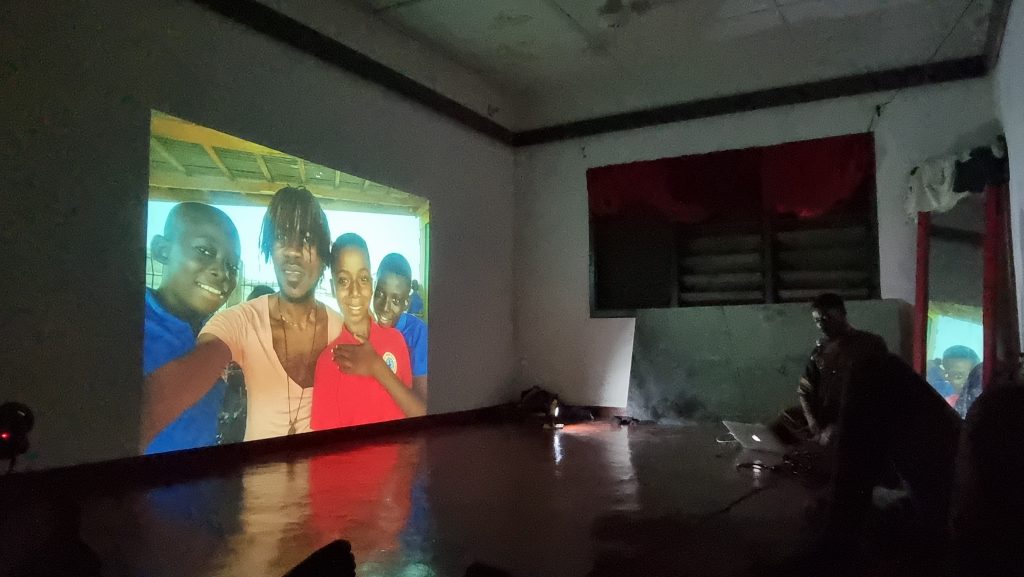
A project by Julius Yaw Quansah at PIAR, a residency in Kumasi founded by crazinisT artisT. Courtesy of PIAR, 2021.
In 2015, Sutherland was given land that her late grandmother, Efua Sutherland, an esteemed Ghanaian poet, director, playwright, and cultural activist, had bought during the 1950s. It’s aptly called Terra Alta, meaning “high ground” in Italian, because the area was a marshland when Sutherland found it. She and her team had to raise parts of the ground up five feet to make it suitable to work on. Sutherland equates the act of raising the ground metaphorically to raising people’s spirits through art, dance, music, and theater. “My dream for the space is to be a lifter-upper for artists,” she said.
After about seven years of fund-raising and construction, Terra Alta now has a year-long program of performances and events, as well as artist residencies (reopening in 2022) that host artists from across the African continent and internationally.
Sutherland is one of several Ghanaian contemporary artists—painter Amoako Boafo, installation artist Ibrahim Mahama, and performance artist Va-Bene Elikem Fiatsi—who, in the absence of government support or much private funding, are taking matters into their own hands by setting up spaces throughout the country to support and mentor the next generation.
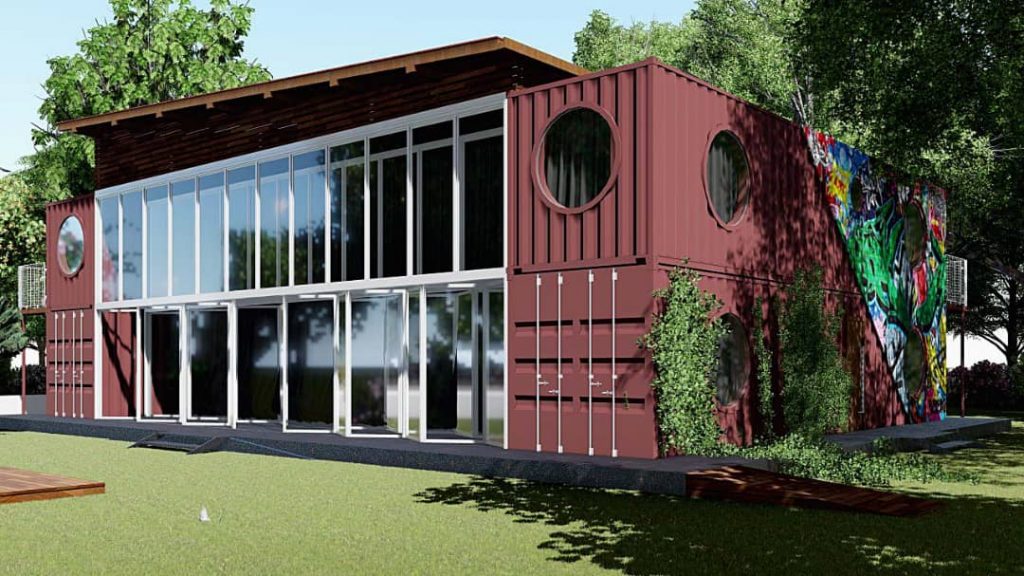
Architect’s render of the black box theater at Terra Alta. Courtesy Sutherland & Sutherland Architects, 2019.
All eyes were on Ghana in 2019, when the country staged its first-ever—and highly lauded—pavilion at the 58th Venice Biennale. Yet much has changed for the small West African nation since then. Several sources in Ghana have told Artnet News that there are no plans for the pavilion to return for the 59th Venice Biennale in 2022.
Pre-Covid, the West African nation had an accelerated economic growth rate, with the IMF even predicting it to be “the fastest growing economy in 2019,” primarily due to its expanding production of crude oil. But the pandemic significantly curtailed the country’s momentum. According to the World Bank, in 2020 Ghana entered a recession for the first time in 38 years. The state currently supports tourism but neither artists nor art institutions; although the country received a $9 million loan from the World Bank in April to alleviate pandemic-related losses in tourism and hospitality, this did not include any funding for the arts, despite the country’s rising creative profile.
Miraculously, under this shroud of challenges, the art scene in Ghana is booming, thanks largely to its star artists, whose international success has inspired a younger generation of artists and art professionals. As the international art market hungrily eyes the rapid production of Ghanaian artists, with collectors quickly snapping up its up-and-coming names and international institutions scurrying after its artists for museum shows and residencies, the artists themselves are making a concerted effort to harness the trickle-down effect to help nurture fellow artists and their country.
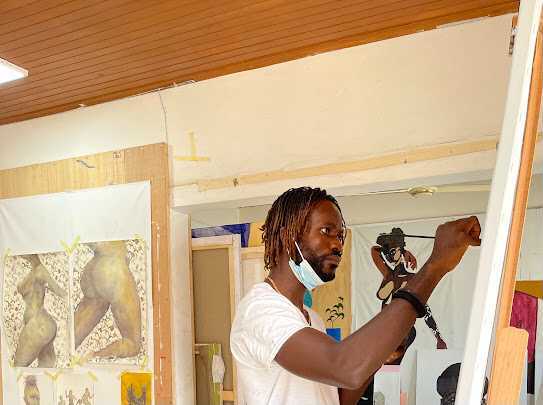
Amoako Boafo in his studio. Courtesy of Amoako Boafo Studio.
Amoako Boafo and his studio space in Labadi, Accra, is one example. In 2020 Ghana’s most talked-about talent leveraged his newfound resources to open several additional studio spaces next to his own in a single-story house. There, he provides several emerging Ghanaian artists—including Eric Adjei Taiwah and Aplerh-Doku Borlabi—studio space and art supplies. Inside each space are easels, paints, paintbrushes, and various found and natural materials used by the artists, who each work in their own rhythms.
“The vision is to provide a safe space where artists can come together, practice, collaborate, experiment, and also learn to express their art in the purest of ways,” Boafo told Artnet News. “This space is established to be a place where like minds meet and work together.”
Sometimes the artists collaborate and mentor each other. Even the studio’s cleaner has begun painting in an area.
“The art scene in Ghana has always been about collaborations and coexistence,” added Boafo. “We the artists from Ghana are working together, and will continue to do so—not just to ensure the growth of the Ghanaian art scene, but to establish a solid foundation of training in the art industry that will benefit new artists that are yet to follow in our footsteps.”
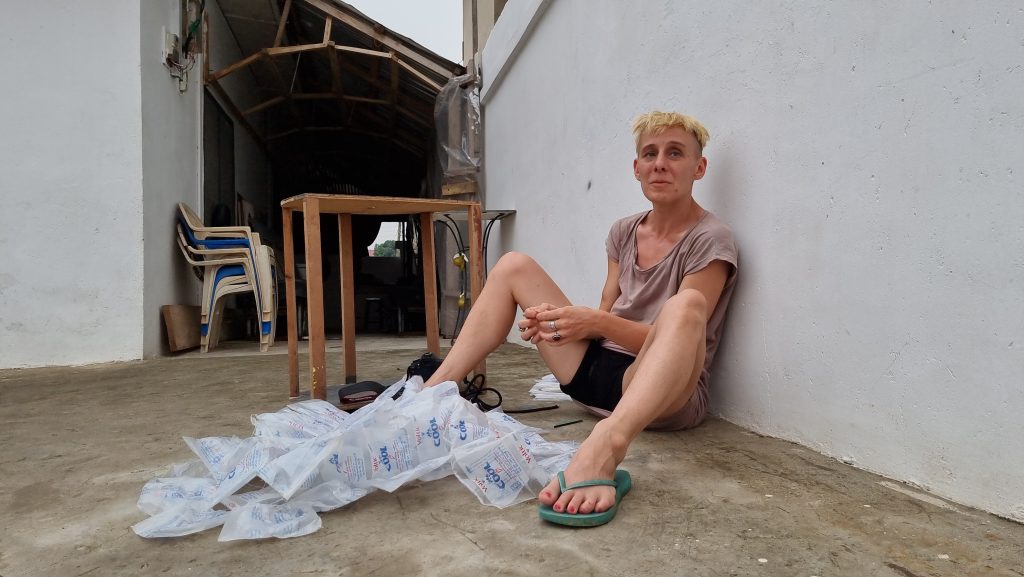
Mad Kate working on their costume for a performance at PIAR, a residency in Kumasi founded by crazinisT artisT. Courtesy of PIAR, 2021.
In Kumasi, Ghana’s second-largest city, situated in the country’s Ashanti Region, the multidisciplinary performance, and activist artist Va-Bene Elikem Fiatsi—professionally known as crazinisT artisT—set up perfocraZe International Artist Residency (PIAR) in 2018, welcoming its first batch of artists in 2019. The artist, recognized in Africa and internationally for avant-garde and risk-taking work, calls the space and its annual interdisciplinary artists’ program a “performance hatchery.” It serves, as she told Artnet News, “as an incubator, laboratory, and an interactive platform for artists, activists, researchers, curators and thinkers to develop and engage with one another on a rich variety of artistic research projects.”
PIAR can host up to eight artists per month, unless they apply for a two-to-three-month stay, meaning it hosts over 60 artists from around the world per year. They live, work, and eat together, and meals for Ghanian artists are fully funded.
It was crazinisT artisT’s own work, which often challenges gender norms in a country that can be hostile to such expression, that spurred the creation of PIAR. “I created the space as a matter of urgency,” she explained. “It is a safe artistic environment and creative community that will contribute to the vibrant art scene in Ghana, in Africa, and across the globe through local and international exchange.”
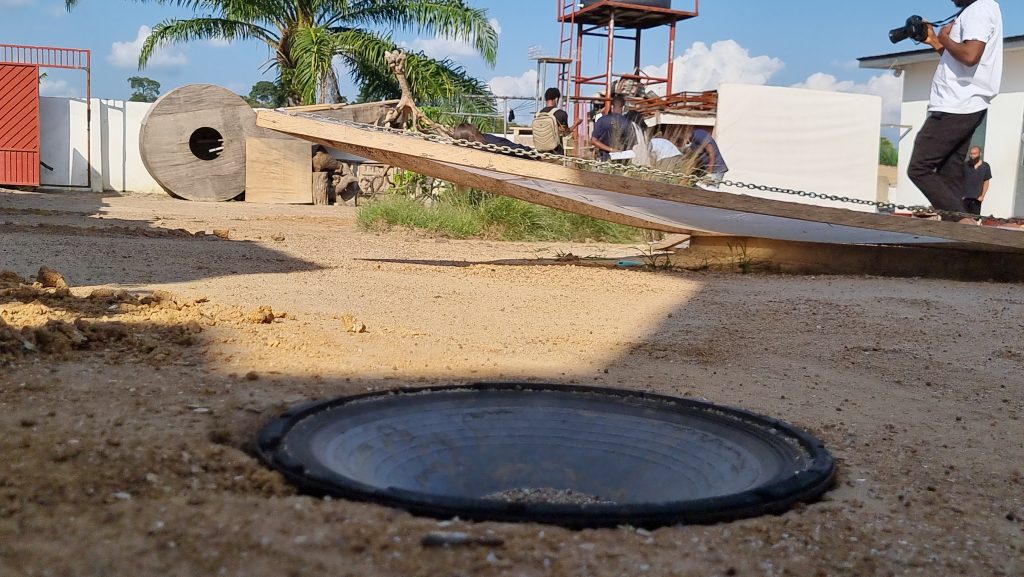
A sound installation by Emilio Gordoa at PIAR, a residency in Kumasi founded by crazinisT artisT. Courtesy of PIAR, 2021.
The residency is an expansion of the artist’s activist and cultural interventions and one that has no commercial intent or mandate. Since 2018, crazinisT artisT has channeled all her artist fees and salary into running PIAR as its founder and artistic director. Sometimes, she says, she receives donations from friends and colleagues.
“There are a few residencies in Ghana, but most of them are commercial,” she noted, referring to programs such as the Noldor Residency, with its “artist pledge” to leave behind an agreed number of works, or the one run by Accra’s top gallery, Gallery 1957, in which the works produced are featured in a selling show. By contrast, she said, “PIAR is an alternative space that does not require or demand products from artists in residence, but rather encourages critical investigation of processes and experimentations.”
The noncommercial nature is key: Through creative practice that leads to critical discourse crazinisT artisT believes art can be “an alternative weapon to change society.” It is a means, she said, “to touch on sensitive topics that are forbidden by doctrines, taboos, and constitutions. Art is a medium to decolonize and refine ourselves.”
A similar artistic revolution is taking place in Tamale, Ghana’s third-largest city in the country’s northeast, thanks to artist Ibrahim Mahama. Through proceeds from his art, Mahama is investing back into his homeland with a mission to redefine the narrative of contemporary art in Ghana and use it as a means for societal change.
Mahama, known for his monumental installations that probe the nature of capitalist structures, economic transactions, and historical constructs, has established three spaces throughout Tamale—theSavannah Centre for Contemporary Art (SCCA), Red Clay, and Nkrumah Voli-Ni—which are used for artist residencies, research, community development, and exhibitions.
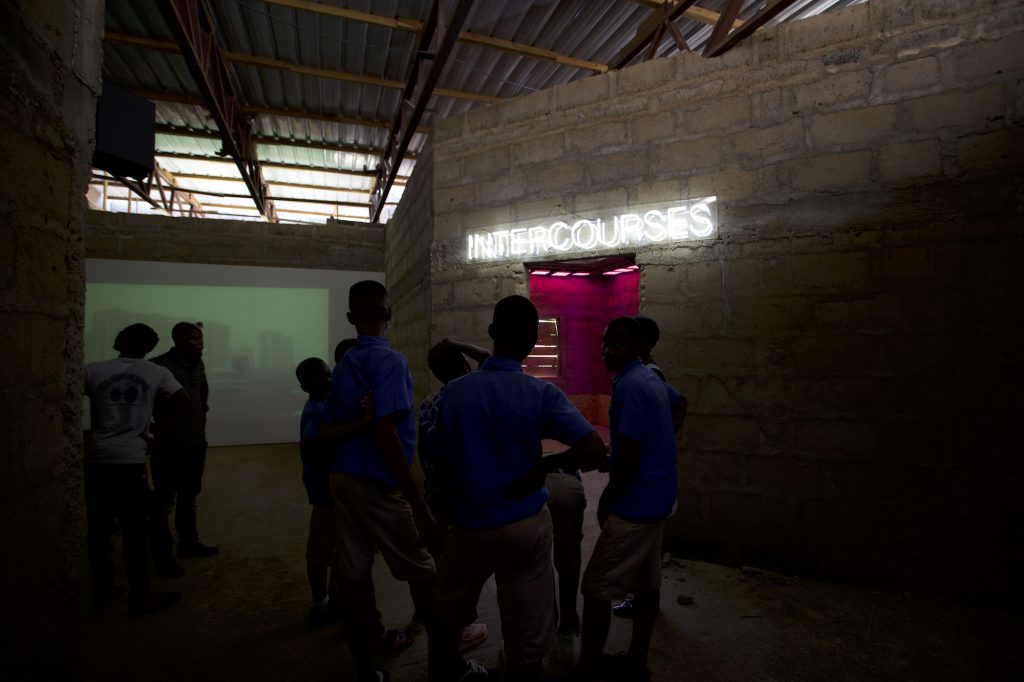
Visitors take in “A Diagnosis of Time—Unlearn What You Have Learned,” exhibition at Ibrahim Mahama’s Red Clay space. Courtesy SCCA Tamale, 2021.
Mahama conceived the idea for SCCA, the first space, in 2010 when he was finishing his fine-art degree at Kwame Nkrumah University of Science and Technology in Kumasi. “At the time there was a strong desire for new pedagogical forms of art, which were led by my professor Karî’kachä Seid’ōu, an acclaimed artist in the department of painting and sculpture,” he tells Artnet News. “He wanted artists to focus not just on making objects as was the tradition, but also on developing new practices and forms.”
Originally, SCCA was intended as Mahama’s own studio in Tamale, where he was born. Inspired by his former professors, who would send their students to established artists to assist with their research, Mahama decided to shift gears and make SCCA an institution to serve other artists and the wider community. Construction, however, only began in 2014, after his first international exhibition at Saatchi Gallery in London, when he began earning money through his art. Once SCCA was established, it mounted shows of Ghanaian modernists such as Kofi Dawson, who hadn’t previously been exhibited locally due to a lack of state institutions.
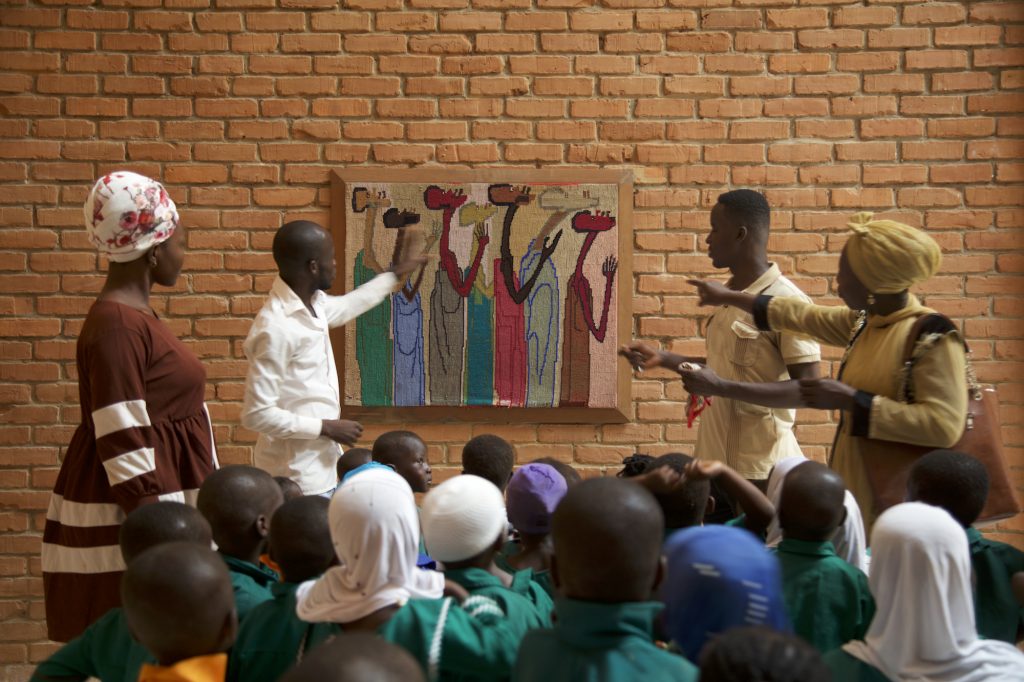
A guided tour of “A Diagnosis of Time—Unlearn What You Have Learned,” exhibition at Ibrahim Mahama’s Red Clay space. Courtesy SCCA Tamale, 2021.
In September 2020, Mahama opened Red Clay, a remote group of buildings surrounded by northern Ghana’s verdant landscape with multiple spaces, many still under construction, and identifiable by its red brick structure—plus the six old airplanes Mahama has collected that are stationed outside. In April 2021, he opened Nkrumah Voli-Ni, his latest space on the site of a former grain silo.
Similar to his own artistic practice, which involves reusing existing and cast-off objects, Mahama chose structures with a previous history, leading him to investigate their former context and aesthetic. His aim for these repurposed art spaces is for artists to have a place to redefine their practice, allowing them to confront and alter their pre-existing narratives.
“For me,” said Mahama, “since we were mentored by a generation ahead of us, it’s important to be able to mentor a new generation of artists that think about the form of art differently—art that is being made for the market, but also art that manages to shift its experiences and best practices with local communities.”
Today, all three of the Tamale structures often work in unison, as with the current exhibition “A Diagnosis of Time: Unlearn What You Have Learned” (through November 5), where works by Ghanaian artists from greater Africa are displayed next to those by international names—like Olafur Eliasson and Zanele Muholi—to explore the nature of time in a nonlinear construct.
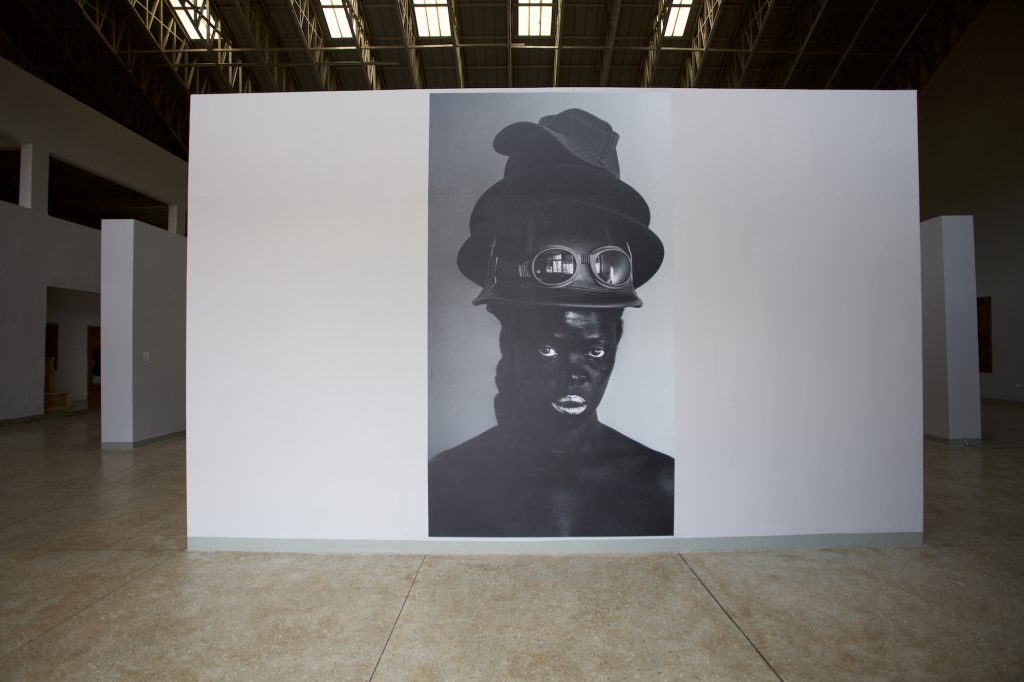
Zanele Muholi, Balindile IV, The Square, Cape Town (2017), on view in “A Diagnosis of Time— Unlearn What You Have Learned.” Courtesy of SCCA Tamale, 2021.
Mahama’s other goal in rehabilitating existing structures is to convince the Ghanaian state to preserve the country’s heritage through maintaining historic buildings. After staging several exhibitions and workshops for children at SCCA and Red Clay, the artist was able to prove to the Ghanaian Lands Commission the the important role that cultural institutions play in the development of the local community, which resulted in the establishment of a renewal program.
“I was able to argue that these old existing infrastructures should be saved,” he said. “Sometimes if one leaves them in the hands of the state they might not end up in good condition. But if we acquire them through private means then we can work on them, so they become public institutions again.”
By foregrounding artistic collaboration, mentorship, and a willingness to give back to one’s community, Mahama, Boafo, Sutherland, and crazinisT artisT show that a buzzing arts ecosystem can grow even in the absence of state funding and economic recession.
“For me, the mission of these institutions is to be able to reconstitute art as a gift for those we mentor and for the community,” says Mahama.
Boafo seconds this belief. “The ability of art to contribute to the economy of Ghana and the well-being of the Ghanaian society is important, because it is a growth that has been waiting to happen.”